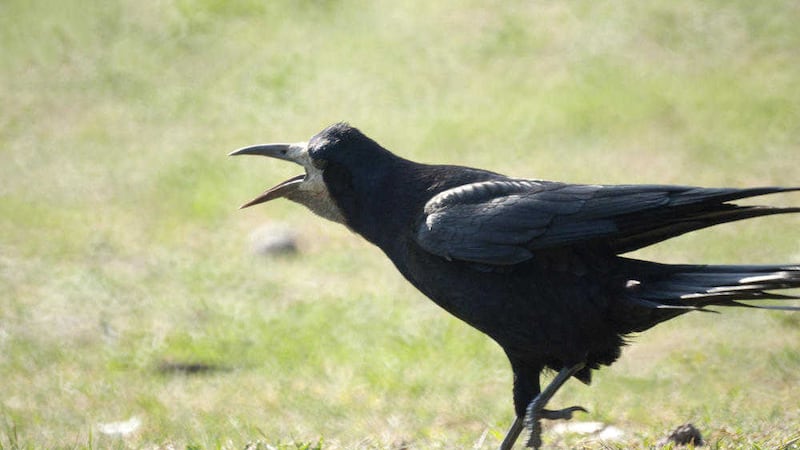MANY songbirds are currently treating us to regular musical harmonies as they bookend each day with spectacular dawn and evening choruses.
Often led by blackbirds with their flutey warbles or thrushes repeating their melodic phrases, these choral explosions have a serious purpose. The vocalists, mostly males, are staking out territory, warning off potential rivals, while females listen to gauge which male is the best singer, the strongest and likely to offer the best genes for any offspring.
During one of those recent evening performances I became aware of the discordant raucous croaking of rooks (Corvus frugilegus) in a freshly cut field nearby. Their noisy intervention seemed to come from another time and to be at odds with the textured music I was hearing from the songsters.
Rooks, very sociable birds, belong to the family known as crows or corvids which include the colourful jay, magpie, raven, hooded crow, jackdaw and chough.
Glossy black, the rook’s slender greyish bill with bare whitish patch at its base is perfectly adapted for probing in the bird’s preferred feeding grounds of moisture-softened earth. Its varied diet consists mostly of worms, beetles, other invertebrates and carrion.
Although rooks can cause significant damage to cereals, potatoes and other root crops, on balance they are beneficial to farming as they also take large numbers of wireworms, cockchafer grubs as well as cranefly larvae (leatherjackets) which are considerable pests to the farmer.
Rooks, ‘rúcach’ in Irish (préachán dubh – black crow is also used) are well known for their loud ‘cawing’ especially as they descend in large groups on their rookeries in early spring or to their winter roosts.
They do everything in the presence of their own kind as their lives are lived through the flock. Very often, they are accompanied by their cousin the jackdaw. This very social behaviour has lead to the belief they hold ‘rook parliaments’ to adjudicate on twig thieving behaviour during nesting time. Their untidy twig nests are built in the treetops of pines mostly and colonies vary in size, averaging under 50 pairs.
In Celtic mythology the rook, often interchangeable with the raven, has strong associations with death and war, a reflection of its tendency to eat carrion, plenty of which was to be found in the aftermath of battle.
This association led eventually to the persecution of crows as harbingers of doom and destruction and the notion that the crow and raven have ‘otherworld’ powers. This belief has its origins from the ancient tale of the Morrigan, the triple Irish Goddess who appears in crow or raven form in the famous story of Táin Bó Cúailnge (The Cattle-Raid of Cooley) when Queen Medb of Connaught launches an invasion of Ulster against the legendary hero Cú Chulainn.
She uses sorcery, druidic magic and shapeshifting to cause terror among Medb’s army, offering Cú Chulainn her love and aid in war. As the armies gather for the final battle, she prophesises the bloodshed to come.
It was said that the Morrigan, in the form of a crow, perched on the shoulder of Cú Chulainn at the time of his death. He had tied himself to a standing stone so he would die upright so it was only when she did so that his enemies knew for sure he was dead.
Whatever our many prejudices against the rook and its cousins, the birds embody the nature and spirit of our countryside. Unlike most songbirds they are heard throughout all the seasons with their distinctive, ancient call never far from us in town or country.
A significant and perhaps defiant reminder of their resilience despite centuries of persecution.


